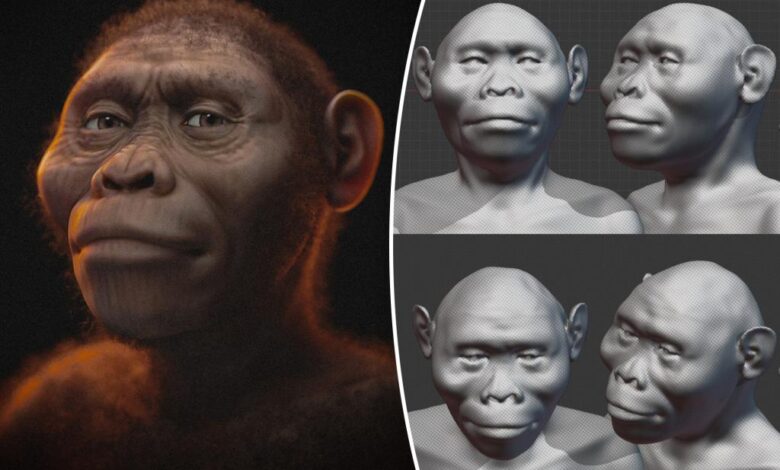The face of humans’ most influential ancestor, Lucy, gets a facelift


Three million years of human evolution began with this face.
Scientists put a face to a name in an epic way after digitally recreating the visage of Lucy, humanity’s most famous primate ancestor.
“Seeing Lucy’s face is like glimpsing a bridge to the distant past, offering a visual connection to human evolution,” Brazil’s Cicero Moraes, a pioneer in the field of forensic facial reconstructions, told the Telegraph of Lucy’s latest update.
Discovered in Ethiopia in 1975 by American paleontologist Donald Johanson, this 3.5-foot female hominin skeleton confirmed that our early ancestors habitually walked on two legs as early as 3 million years ago.
Lucy — who was named after the iconic Beatles song, “Lucy In The Sky With Diamonds” — belonged to the Australopithecus afarensis species and remains one of the best-preserved early hominin specimens ever discovered.
The early woman’s small brain size notably disproved prior theories that a larger brain was essential for the dexterity required for upright mobility.
While Lucy’s face has been reimagined before, Moraes believes that his virtual reboot offers an “anatomically coherent representation” of what this prehistoric celebrity may have looked like.
To virtually bring Lucky to life in a realistic way, the digital wizard’s team “aped” her visage using scans of Lucy’s skull coupled with soft tissue data from chimpanzees, whose brain is around as big as that of an Australopithecus afarensis.
The digital Dr. Frankenstein said he based other features like hair and skin on “paleoanthropological descriptions suggesting adaptation to the hot Ethiopian environment of 3.2 million years ago.”
As seen in pics posted to Moraes’ Facebook page, the resultant bust evokes a hybrid between human and ape with the hairiness of a primate but with a flatter, more humanoid face and less-jutting jaw.
“It has a less pronounced brow ridge than in chimpanzees, though still distinct from modern humans,” claimed Moraes, who said the team was somewhat inhibited by the limitations of the “cranial fragments.”
This “Jurassic Park”-esque resurrection reflected the remains of the real-life Lucy, whose simian-like upper torso suggested a life adapted to the trees, while the lower torso was designed for walking on two legs — although her brain was closer in size to that of primates.
“The reconstruction, blending science and art, allows us to imagine what she might have looked like 3.2 million years ago, enriching both public and scientific understanding of our ancestors,” said Moraes. “It’s a reflection of technological progress that makes an extinct being tangible.”
Lucy is just one of many famous figures recreated by the graphics expert, who has approximated the visages of everyone from Santa Claus to King Tut.



